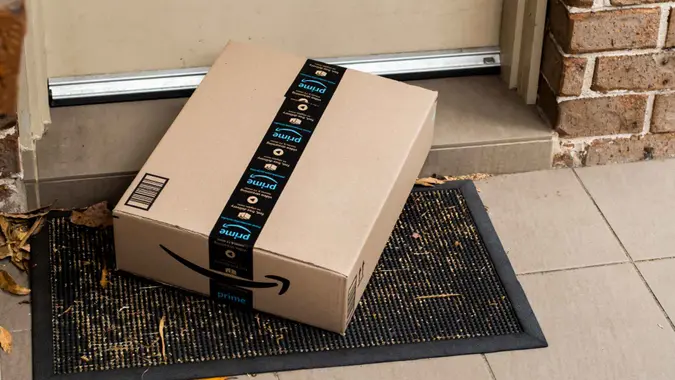7 Best Budgeting Methods If You Live in a High-Cost State

Commitment to Our Readers
GOBankingRates' editorial team is committed to bringing you unbiased reviews and information. We use data-driven methodologies to evaluate financial products and services - our reviews and ratings are not influenced by advertisers. You can read more about our editorial guidelines and our products and services review methodology.

20 Years
Helping You Live Richer

Reviewed
by Experts

Trusted by
Millions of Readers
Managing your money when you live in a high-cost state is stressful, to say the least. If you live in a place such as California or New York, you’re well aware of how housing alone can eat up more than half of your monthly income.
Finding a budgeting method that works for your particular situation is crucial if you want to stick with it in the long run.
“If you’re living in a high-cost state, you can expect that your housing costs will take up a higher percentage of your income than what you’d find in a low-cost state,” said Melanie Musson, finance expert with Insurance Providers.
“Things like groceries and insurance will also likely be more expensive. So, while budget breakdowns with a set percentage of income that should be spent on housing may work for many Americans, they may not be realistic for someone in a high-cost state.”
So, instead of going with the average advice that works for the average household, she recommended working on your budget based on your reality. Read below for more expert advice on the best budgeting methods to use.
The 50/30/20 Budget — Adapted for High Housing Costs
The traditional 50/30/20 budget allocates 50% to needs, 30% to wants and 20% to savings. However, according to Abid Salahi, finance expert and co-founder of FinlyWealth, in high-cost states where housing often exceeds 50% of income, people need to adopt a 60/20/20 strategy:
- 60% for needs (including housing)
- 20% for wants
- 20% for savings and debt repayment
“This adjusted ratio acknowledges the reality of high housing costs while maintaining a focus on savings,” Salahi said.
To make this work, he recommended the following:
- Scrutinize your “needs” category; ensure every expense truly qualifies as a need
- Look for areas to reduce housing costs, such as getting a roommate or negotiating rent
- Be ruthless with the “wants” category; Salahi said, “In high-cost areas, luxuries often need to be the first to go.”
The Anti-Budget Method
For those overwhelmed by traditional budgeting in high-cost environments, the anti-budget can be effective, Salahi said. Do this:
- Calculate your savings goal (aim for at least 20% of your income)
- Set up automatic transfers to savings accounts as soon as you’re paid
- Live on what’s left.
“This method ensures you’re prioritizing savings without the stress of tracking every expense,” Salahi said.
He said it’s particularly useful in high-cost states where traditional budget categories can quickly become skewed.
To maximize this method:
- Use separate savings accounts for different goals (emergency fund, retirement, etc.)
- Gradually increase your savings rate over time
- Use any windfalls or extra income to boost your savings rather than lifestyle inflation
Zero-Based Budgeting With a High-Cost Twist
Zero-based budgeting assigns a purpose to every dollar of income. In high-cost states, Salahi advised implementing it this way:
- List all income sources
- List all expenses, starting with housing
- Allocate every dollar, prioritizing essentials and savings
- For any deficit, identify expenses to cut or income to increase
“The key in high-cost areas is to be extremely detailed and realistic,” he added.
Break down expenses into the smallest possible categories to identify potential savings. For example, instead of a general “food” category, separate “groceries,” “work lunches” and “dining out.”
The Values-Based Budget
This method aligns spending with personal values, which can be particularly effective in high-cost areas where tough choices are necessary.
- Identify your top 3-5 financial values (e.g., security, experiences, education)
- Allocate your budget based on these values
- Cut ruthlessly in areas that don’t align with your values
For example, Salahi explained that if “experiences” is a top value but “luxury housing” isn’t, you might choose to live in a smaller apartment to free up money for travel or concerts.
The Multiple Account Method
According to Salahi, this method helps manage high fixed costs:
- Open multiple bank accounts, each dedicated to a specific purpose (e.g., housing, utilities, groceries, entertainment, savings)
- Allocate income to these accounts based on your budget
- Once an account is empty, stop spending in that category
“This method provides clear boundaries and prevents overspending,” Salahi said, “which is crucial in high-cost environments where every dollar counts.”
The Percentage-Based Savings Method
When housing costs are high, Salahi recommended focusing on percentages rather than fixed amounts:
- Aim to save a fixed percentage of your income, regardless of the amount
- Start with 10% and gradually increase
- Use automatic transfers to enforce this habit
“This method ensures you’re always saving something,” he said, “even if the dollar amount seems small compared to high living costs.”
The ‘Trim and Transfer’ Method
This aggressive method, according to Salahi, is designed to find extra money in a tight budget:
- Review every expense and trim where possible
- Immediately transfer the saved amount to savings or debt repayment
- Do this weekly to maintain momentum
For example, if you reduce your grocery bill by $20, immediately transfer that $20 to savings. This method helps create a tangible link between cost-cutting efforts and financial progress.
“Implementing these methods in high-cost states requires discipline and often creativity,” Salahi said. “The key is to choose a method that feels sustainable for your lifestyle while still prioritizing savings and essential expenses. Remember, the best budget is one you can stick to consistently.”
 Written by
Written by  Edited by
Edited by 

























